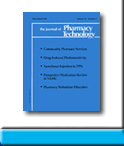 |
 |
Intracoronary Vasodilators for the No-Reflow Phenomenon
Kristin E Montarella and Mark A Gales
To request full article click here.
OBJECTIVE: To review the literature relating to the use of intracoronary vasodilators to prevent and/or treat the no-reflow phenomenon in patients undergoing percutaneous coronary intervention (PCI).
DATA SOURCES: A literature search was conducted using MEDLINE (1966–March 2008) and Science Citation Index (1945–March 2008) using the search terms vasodilators, no-reflow, and intracoronary.
Study Selection and Data Extraction: English-language clinical trials and case series were selected from articles retrieved. References of reviewed articles were examined for additional sources. Studies relating to the use of intracoronary vasodilators in the prevention and/or treatment of no-reflow in PCI were evaluated for safety and efficacy data. Articles relating to agents not available in the US were excluded.
DATA SYNTHESIS: Evidence of intracoronary adenosine's utility in no-reflow treatment is limited. Its use in no-reflow prevention was associated with outcomes ranging from no difference to nearly an 88% reduction in no-reflow development; the drug was generally well tolerated. No-reflow treatment with intracoronary verapamil improved flow in 87–100% of cases. Preventive trials with verapamil failed to demonstrate efficacy. Atrioventricular block requiring treatment was the most commonly reported adverse event with intracoronary verapamil. Literature on intracoronary diltiazem and intracoronary nicardipine is limited. Both agents produced greater than 95% efficacy in no-reflow treatment, while prevention studies found no-reflow developing in less than 4% of patients. Although adverse event reporting was limited, hemodynamic instability was noted in patients receiving diltiazem. Response rates ranged from 73% to 100% when intracoronary nitroprusside was studied as treatment for no-reflow associated with acute myocardial infarction (AMI). Systemic hypotension was noted with nitroprusside administration.
CONCLUSIONS: The available data are predominately from case series and retrospective reviews. Prevention of no-reflow with intracoronary vasodilators in elective PCI is not warranted. Nitroprusside should be considered first-line treatment in no-reflow associated with AMI.
J Pharm Technol 2008;24:202-12.
ACPE Universal Program Number: 407-000-08-053-H01-P
To request full article click here.
|
|
|
||
|

